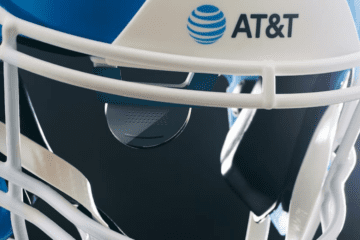In the summer of 2014, Germany won its fourth FIFA World Cup, people around the world took the Ice Bucket Challenge, and Taylor Swift was encouraging us all to shake it off. Meanwhile the Federal Communications Commission (FCC), in an effort to implement the 2012 President’s Council of Advisors on Science and Technology (PCAST) report, was adopting an innovative, experimental sharing framework in a spectrum band it believed to have limited potential for use in next-generation mobile broadband networks. The end result was the Citizens Broadband Radio Service (“CBRS”). Ten years later the FCC is revisiting key aspects of the sharing framework to see if modifications to the rules can increase its utility.
Much changed in the mid-band spectrum world in the last decade, and much has also been learned. When the CBRS framework was adopted, the 3.5 GHz spectrum band was wedged between longstanding commercial satellite and military operations, with little expectation that its neighborhood would change. Today, 3 GHz spectrum is powering 5G networks worldwide and the CBRS band now resides between two crucial, high-power, licensed 5G bands – the auction of which raised more than $100 billion combined for the U.S. Treasury.1
It is wise for the Commission to revisit the CBRS band to increase its utility, particularly given these significant changes in the spectrum environment. However, the changes the Commission proposes to make would still hold this band back from reaching its full potential.
John Leibovitz and Ruth Milkman dig into spectrum sharing as a public policy. Through their research, they determine there’s an opportunity to consolidate “like” types of spectrum access in different parts of the band. Check out their paper.
Specifically, studies have suggested the 3.5 GHz band is underutilized.2 In contrast, the two adjacent bands (C-band and the 3.45 GHz band) have been rapidly deployed. Drive tests commissioned by CTIA in eight U.S. cities found that licensed C-Band spectrum is deployed and used at a much higher rate than CBRS spectrum.3 This should not surprise anyone considering the relative value placed by the market on the CBRS priority rights versus adjacent licensed spectrum – the relative value of licensed spectrum exceeds that of CBRS Priority Access License (“PAL”) rights.4
The Commission’s latest review of the CBRS sharing framework is a recognition that we can and should do better with this prime spectrum. That said, we believe that marginal adjustments (if any) that are likely to result from this latest regulatory review are unlikely to address the regulatory deficiencies in this band nor will they drive more intensive use of CBRS spectrum.
The original CBRS band was the product of creative thinking, and ten years later the Commission should get creative once again. Rather than trying to bolt new features onto an experimental CBRS band, the Commission should consider the bigger picture, and how evolutions in the spectrum environment have changed the highest and best use of this prime mid-band spectrum.
There is a way to find more spectrum for CBRS in a location that would allow the band to best serve its original purpose while also making the 3 GHz band the centerpiece of wireless innovation in the U.S. as it is around the world.
Our proposal
What we propose is a strategic rationalization of the 3 GHz band that best reflects the spectrum environment and maximizes its future potential:
- The current CBRS allocation would be expanded and relocated to 3.1-3.3 GHz. This would expand the amount of spectrum available for General Authorized Access (“GAA”) uses from 150 MHz to 200 MHz, with the option of incorporating additional PAL blocks in the new band.
- The 3.45-3.55 GHz and 3.7-3.98 GHz bands would not change and would continue to be used for licensed mobile broadband services, supporting 5G services in the U.S.
- The 3.55-3.7 GHz band would be auctioned for licensed, full-power use and serve as a bridge, uniting 5G services in the 3 GHz band.
President Joe Biden has called radio frequency spectrum one of “our Nation’s most important national resources.” Read more about the Biden administration’s National Spectrum Strategy.
This approach would give the U.S. 530 MHz of contiguous licensed mid-band spectrum to support 5G, with potential future expansion at both ends of the band.
To accomplish this realignment, we propose an incentive auction that builds upon the success of the FCC’s prior incentive auctions in the 600 MHz and 39 GHz bands. Current CBRS PAL holders would have the choice of relocating to the new CBRS band, accepting vouchers they can use toward bidding on new high-power licenses, or receiving a cash payment in exchange for the relinquishment of their priority rights.
Proceeds from the auction of full-power licenses in the 3.55-3.7 GHz and any newly available PALs in the 3.1-3.3 GHz band would fund the relocation of incumbents to the new CBRS band. In light of the demonstrated high demand for full-power, primary licenses at 3 GHz, auction revenues can be expected to be considerable.
This rationalization of the 3 GHz band will not be possible unless and until Congress renews the FCC’s authority to conduct spectrum auctions – including its incentive auction authority – which lapsed more than a year ago.
Due to a lack of auction activity in the U.S., other nations have raced ahead in the 5G revolution while the U.S. remains stationary. U.S. lawmakers and regulators must act quickly to reauthorize the FCC’s auction authority, provide for additional licensed spectrum, and modernize spectrum use to keep pace with the current landscape.
The bottom line
In outlining her vision for 5G in the 3 GHz band, FCC Chairwoman Jessica Rosenworcel expressed her hope and expectation that the Commission would “consider opportunities to rationalize the entire 3 GHz band.”5 In revisiting the 3.5 GHz band, the Commission has the potential to do just that.
The future is now, and the future of the greater 3 GHz band is clear and promising. But just like ten years ago, it will take big ideas and creativity to get there. By adopting our proposed framework, the FCC can lead the way.
1 FCC Spectrum Auctions Summary | Auction 107 (C-Band) and Auction 110 (3.45 GHz)
2 2012-2022. CBRS: An Unproven Spectrum Sharing Framework (11/14/22)
3 CBRS Spectrum Is Lightly Used, Whereas C-Band Is Deployed Extensively (9/25/23)
4 The C-band auction raised $80.9 billion in auction revenue for 280 MHz of spectrum. In contrast, the market valued 70 MHz of licensed CBRS spectrum at $4.6 billion. The more recent auction of 3.45–3.55 GHz spectrum raised $21.8 billion, also much higher than CBRS on a per MHz basis. 5G Mid-Band Spectrum: The Benefits of Fill Power, Wide Channels, and Exclusive Licensing (11/11/2022)
5 Statement of Acting Chairwoman Jessica Rosenworcel (March 2021)





